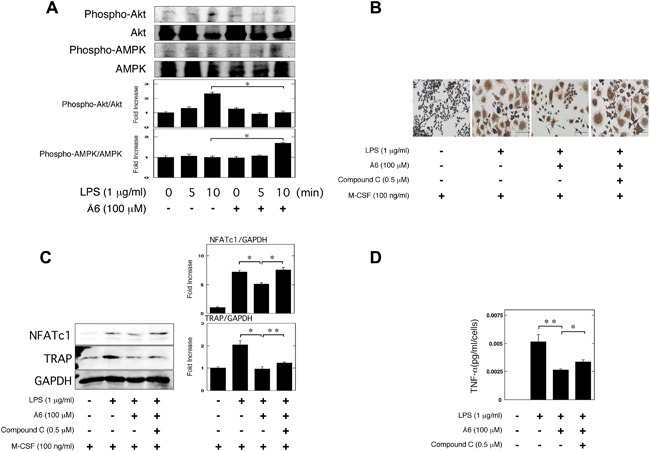Figure 5.

Å6 inhibited the Akt pathway, but activated the AMPK pathway. (A) RAW264.7 cells were pretreated with 100 μM Å6 for 30 min and then stimulated with 1 μg/ml LPS for the indicated periods. Phospho‐Akt, Akt, phospho‐AMPK, and AMPK were examined by a Western blot analysis. The histogram on the bottom panel shows quantitative representations of phospho‐Akt or phospho‐AMPK obtained from densitometry analysis after normalization to the levels of Akt or AMPK expression, respectively (n = 3). (B and C) RAW264.7 cells were cultured for 3 days in the absence or presence of LPS (1 μg/ml), M‐CSF (100 ng/ml), Å6 (100 μM), or compound C (0.5 μM) as indicated. (B) TRAP‐staining was performed to detect OC differentiation. Scale bar = 100 μm. (C) The expression of NFATc1 and TRAP in RAW264.7 cells was examined by a Western blot analysis. The histogram on the right panel shows quantitative representations of NFATc1 or TRAP obtained from densitometry analysis after normalization to the levels of GAPDH expression (n = 3). (D) RAW264.7 cells were cultured for 24 h in the absence or presence of LPS (1 μg/ml), Å6 (100 μM), or compound C (0.5 μM) as indicated. The TNF‐α content in the conditioned media of RAW264.7 cells was determined by using ELISA as described in Materials and Methods (n = 3). The data represent the mean ± SEM. *p < 0.01, **p < 0.05.
